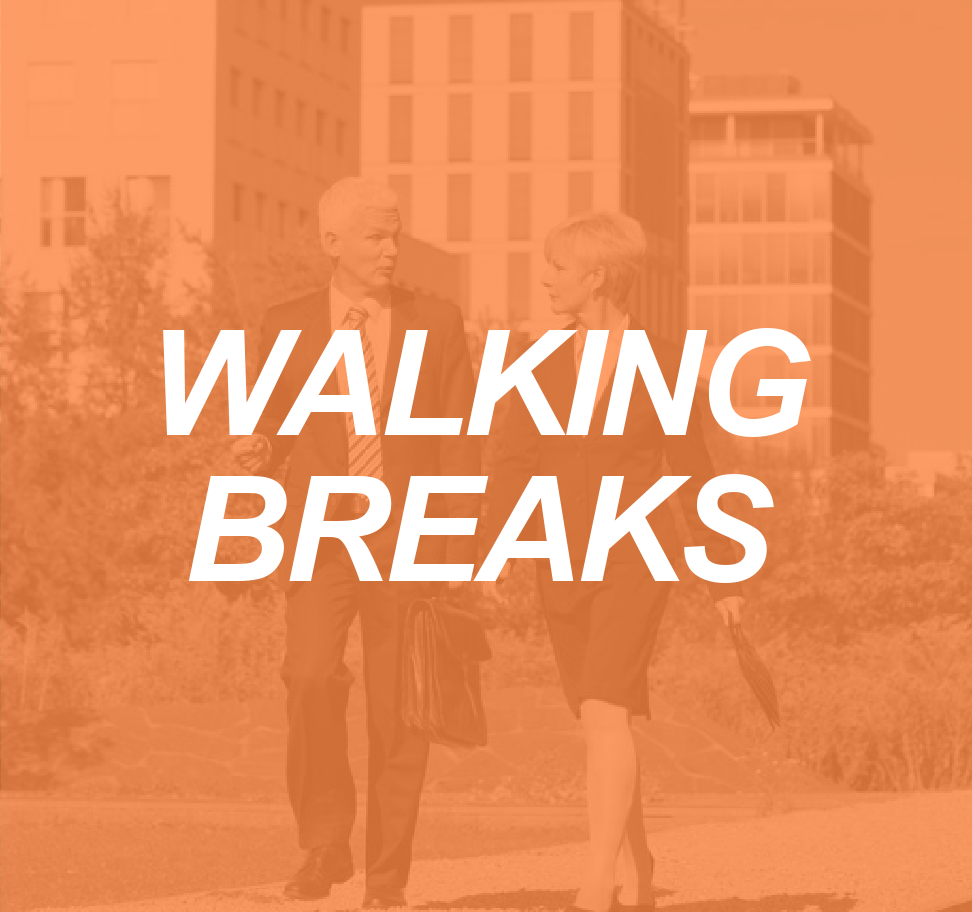
Walking has clear benefits for the body and mind. It improves cardiorespiratory health, reduces stress, helps maintain muscle mass and bone density, and gets the blood pumping throughout the body. Walking is also weight-bearing, but low-intensity. It requires no special equipment, programming, or a high fitness level to engage in. So, why is walking so underrated when it is likely the best way to leverage NEAT calories and improve movement throughout the day? How can we encourage our fitness clients to take a walk break or two throughout the day to support their progress?
Why Walking is Underrated
Walking, unlike other forms of cardiorespiratory exercise, is relatively low in the intensity factor. As a result, some perceive walking to be “less than” because it doesn’t result in a “burn” or is not as physically or metabolically demanding as running, for example. Running, because of larger muscle recruitment, higher intensity, and faster motion, is more demanding overall. But this doesn’t mean walking is not effective or that it is not a better choice for some clients. It also does not mean that walking cannot be integrated into fitness clients’ routines to burn additional energy throughout the day.
How to Encourage Walking More and Sitting Less
Before clients can identify pockets of time to integrate movement, they need to develop a level of awareness about their sedentary time. When I encourage clients (or students) to evaluate their sedentary time, I have them complete a time log. Like a food log, this record includes two weekdays and one weekend day. Of course, keeping track of sedentary time throughout the week can reveal a more detailed pattern, but – let’s be honest – tracking is tedious, and it takes time. You may have to check in with them to remind them on tracking days.
The Power of the Walk Break
Encouraging walking breaks (or movement breaks) throughout the day with your clients will help them avoid the “active couch potato” existence. An individual who is considered an “active couch potato” is an individual who meets the minimum recommendations for regular physical activity but whose daily movement is mostly sedentary. Previous research has demonstrated that engaging in daily exercise and then sitting all day or for extended periods of time is harmful to overall health and well-being. In other words, engaging in moderate-intensity daily physical activity may not counteract the harmful effects of sedentary work and lifestyle.
Ultimately, what we, as exercise professionals, aim to achieve is to get our clients to move more and sit less. One of the most effective ways to do this is to encourage clients to take hourly walk breaks or movement breaks every 60 to 90 minutes. Walking not only burns some calories and moves the body, it helps us think more clearly, improves energy, can ease joint pain, regulate blood sugar, and improve your mood. Who doesn’t need these additional benefits throughout the day?
“Walk Break” Strategies to Share with Clients
No single strategy or set of strategies will work for every client. This will take some trial and error and experimentation. Here are five ideas to share with clients.
- Schedule regular walk breaks in your calendar system (recurring at least every 90 minutes for five minutes).
- Set a timer for every 90 minutes to get up and move.
- Take a 15-minute walk break at lunch periods
- Use an activity tracker to monitor steps, or set move alerts as in two above.
- Invite a colleague on a walk if you have a meeting scheduled.
Note: If weather is a concern for your geographic location, instead of walk breaks try movement breaks that include yoga, 5-minute HIIT, stretching activities, or a combination of bodyweight movements, such as these that help counteract sitting. These can be done in 5–7-minute increments.
The point overall is to find ways to help your clients engage in regular movement throughout the day and not only during training sessions with you. Start slow and collaborate with your clients to find active solutions.
[sc name=”stretching” ][/sc]
Dr. Erin Nitschke, NFPT-CPT, NSCA-CPT, ACE Health Coach, Fitness Nutrition Specialist, Therapeutic Exercise Specialist, and Pn1 is a health and human performance college professor, fitness blogger, mother, and passionate fitness professional. She has over 15 years of experience in the fitness industry and college instruction. Erin believes in the power of a holistic approach to healthy living. She loves encouraging her clients and students to develop body harmony by teaching focused skill development and lifestyle balance. Erin is also the Director of Educational Partnerships & Programs for the NFPT. Erin is an editorial author for ACE, IDEA, The Sheridan Press, and the Casper Star Tribune. Visit her personal blog at belivestaywell.com


